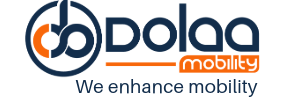2024-2029: Five years to deliver the Green Deal’s mobility promises
Demand Responsive Transport (DRT) solutions have been a fixture in developed nations for many years, particularly serving as public transport alternatives in areas characterized by low passenger demand where conventional public transportation may not be economically feasible. Recent technological advancements have significantly improved DRT services, leveraging transport telematics to enhance flexibility in booking, route planning, and adaptability to varying demand levels. Modern DRT services are notably inclusive, addressing the mobility needs of individuals with difficulties, thereby contributing to social inclusivity. In Europe, there is a growing momentum around DRT services, particularly in medium and small-sized cities, as well as low-density suburbs of major metropolitan areas. Referred to as Bus On Demand or Microtransit, these services offer public transportation with flexible routes and schedules, dynamically adjusting based on real-time demand data collected through digital communication tools. While the concept has been prevalent in rural areas, relying on telephone-based requests and manual service routing, the digitalization of public transport and widespread mobile phone adoption now presents an opportunity to enhance accessibility in urban low-demand areas. However, the adoption of DRT in European cities faces various challenges. One significant hurdle is the imperative to make the service appealing, especially in instances where demand is inherently low. This poses a profitability challenge for transport authorities and operators, often necessitating subsidies from authorities to ensure a minimal return on investment for the operators. Furthermore, the successful deployment of DRT solutions encounters obstacles related to a knowledge gap and a dearth of planning tools for Public Transport Authorities (PTAs). Design criteria are frequently estimated on a case-by-case basis and undergo continuous modification once the service is operational. Addressing these challenges is pivotal for the widespread implementation and success of DRT solutions in European urban settin
The MultiDEPART Project
The MultiDEPART project, supported by funding from the EIT Urban Mobility program, aimed to create a strategic tool for planning Demand Responsive Transport (DRT) services and formulate an assessment framework for evaluating various DRT schemes. The team behind MultiDEPART developed tools specifically tailored for planning, managing, and monitoring DRT solutions in Lisbon, the Barcelona Metropolitan Area, and Thessaloniki. These tools were designed to benefit Public Transport Authorities (PTAs), fostering the harmonization and scalability of DRT services across European cities. Cities are increasingly turning to innovative mobility solutions like DRT to tackle mobility challenges, enhancing existing public transport services and addressing connectivity gaps in areas with limited or no access to public transportation. Additionally, the implementation of DRT solutions can lead to reduced operational costs for public transport services. By replacing inefficient bus lines with potentially smaller vehicles based on demand predictions derived from passenger app requests, DRT offers a more cost-effective alternative. Strategic planning is crucial for delivering an attractive and competitive DRT service equipped with the appropriate fleet to meet potential demand. Considerations must extend to operational aspects to optimize the overall cost for both operators and users while ensuring efficient service performance.
Source: Aimsun
Author
dolaaadminRelated posts
What is On-demand Transit and Why Does Your City Need It?
The concept of “on-demand transit” has significantly reshaped transi
Roadmap for Future Mobility: Mobility-as-a-Service (MaaS)
Mobility-as-a-Service (MaaS) holds the potential to address some of the most pre
Employee Transport Solution
In today’s dynamic corporate landscape, efficient employee transportation

